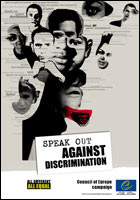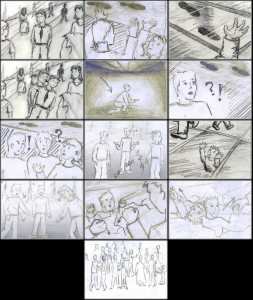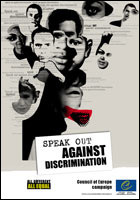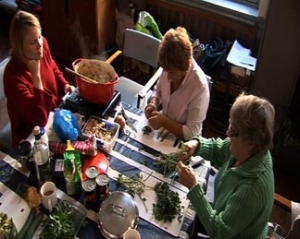Para leer este blog en español pincha aquí.
Our interest in this campaign started some time ago. We still remember our first meeting that first week of February. London was covered by snow and transport was at a stand still. Even that didn’t stop us having a meeting to discuss our different ideas.
The Project comes from the Council of Europe and is aimed at highlighting the problem of discrimination in society. In order to meet this objective, we are going to produce a public information video against discrimination which will be shown in different countries around Europe. It should serve as a call to action to “Speak out against discrimination”.
Under this premise, we worked out an idea and we decided to write a treatment…
The treatment is called “The Glass Ceiling”. There are two levels split by a glass floor/ceiling. The people on the top level are walking fast. Oblivious, self involved, anonymous. They do not interact with each other and they do not look around them.
The people below the glass are the same as the people above, but they cannot get through the barrier. They bang on the glass, they shout, they push.
The people above do not hear, see or acknowledge the people below.
An event occurs to reveal the existence of the other reality:
An individual from above falls and finds themself under the glass floor. Suddenly, more people from the upper level appear below the glass. They are all taken aback.
People trapped beneath the glass start banging, everybody above joins in until they break through.
“SPEAK OUT AGAINST DISCRIMINATION”
The call to action cuts across the scene.
Everybody is now together, interacting, laughing, enjoying their coexistence.
After hearing all different points of view, we chose the idea of the Glass Ceiling because it matches best with the concept we are trying to portray.
We started working in the script and started building the visual concept for the project to send it to the Council of Europe and waited for their approval.
After a few weeks, we had some good news from the Council of Europe, we got a positive answer from them. We are all excited about starting this new project. Next step: the story board!
If you want to get more information about the project “Speak out against discrimination”, click here.
For more information about Spectacle, click here.







